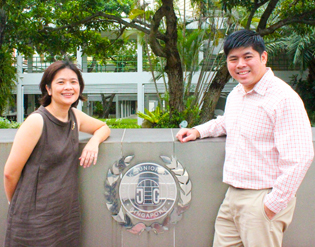Why Singapore’s English Teachers Should Embrace Singlish, Not Fight It
Is it time for Singaporean educators to embrace Singlish as a legitimate learning tool? What the Research […]
Read More
The Science teachers at Temasek Junior College have put great effort and thought into designing their pedagogy and curriculum. They believe this has helped their students to be better thinkers and learners.
When the first batch of students from Temasek Junior College‘s (TJC) Integrated Programme (IP) took their first Science common test, together with their first-year JC counterparts in the mainstream, they didn’t do so well.
It wasn’t that they didn’t have the requisite knowledge. It was simply because they had not taken a pen-and-paper exam in a while. In fact, they had not used a Science textbook for some time either.
But it wasn’t long before they were outperforming their peers. Their teachers believe it was because these students were taught to THINK differently.
The THINK© cycle was introduced as a key pedagogy for Science when the IP began in 2005.
“The THINK cycle is a rojak (or blend) of problem-based learning, inquiry-based learning, project-based learning and more,” explains Mr Simon Foo, Head of TJC’s Science Department.
 The THINK cycle begins with a trigger, usually a case study involving a problem or an inquiry. Students drive the process by exploring and discovering the gaps in their knowledge. They gather and interpret the data on their own, and then come together to build on each other’s findings and hypotheses.
The THINK cycle begins with a trigger, usually a case study involving a problem or an inquiry. Students drive the process by exploring and discovering the gaps in their knowledge. They gather and interpret the data on their own, and then come together to build on each other’s findings and hypotheses.
Teachers take a step back and provide guidance when needed. “We are there as facilitators and not dispensers of knowledge,” explains Simon. “Most of the time we answer their questions with questions pointing them in a certain direction or to read a certain article.”
At the end of the cycle, students present their work to their other classmates, in the form of a video, model or Flash animation. The challenge is to present their findings and explain the Science concepts used to solve the problem to others.
As with all things new, the THINK cycle needed some getting used to. Mrs Joyce Teo, Head of IP Science, notes that students often feel insecure when they first join the IP. They are more accustomed to structured tasks and pen-and-paper assessments.
Teachers, too, especially the newer ones, sometimes struggle because their own learning experiences were mostly teacher-centred. But everyone usually gets accustomed to it after a term or two, especially the students.
Through years of using and refining this process, the teachers have found that the critical approach to learning does encourage creative thinking in their students.
Joyce notes that they pick up the skills of working through the thinking process rather than expecting answers to be given. They start thinking about what can be done, how it is done, and why it is done a certain way.
“They feel it’s okay to be uncertain and to explore and to not know,” adds Simon. It helps that they also start to do better in their project assignments, and that encourages them to keep at it.
At the heart of the THINK cycle is a desire to make Science learning relevant. “It’s actually very much about how Science should be learned in an authentic form, and not in terms of memorizing facts, putting them down on a piece of paper and scoring well.
This model of teaching was thus designed to help contextualize learning. “Science is not learned in silos – all of it has connections to our daily lives,” says Simon.
– Mrs Joyce Teo, Head of IP Science, Temasek Junior College
It also effectively develops 21st century skills such as being a more confident and self-directed learner as well as an active contributor. “The Ministry of Education encourages two elements – collaborative learning and student-directed learning,” notes Simon. “That’s very much in our THINK cycle!”
“We realize that this mode of teaching and learning does take up a bit of time, and with that it also means that the content we cover may not be as much,” notes Joyce. But the teachers at TJC have pressed on, firmly believing that the THINK cycle works, and they believe their efforts have paid off.
Simon is pleased to note that the students are clearly learning in a deeper manner. When given a problem, they are able to gather knowledge from various sources and apply it to solve the problem. “I do see a lot of transference of knowledge and thinking of other dimensions,” he says.
As Joyce notes, “In the real world, they will not always get answers. They have to find it, and then decide how to share the ideas.” For these students, they can say they know how.
No fish were harmed in the process of setting up the experiment for students in TJC.